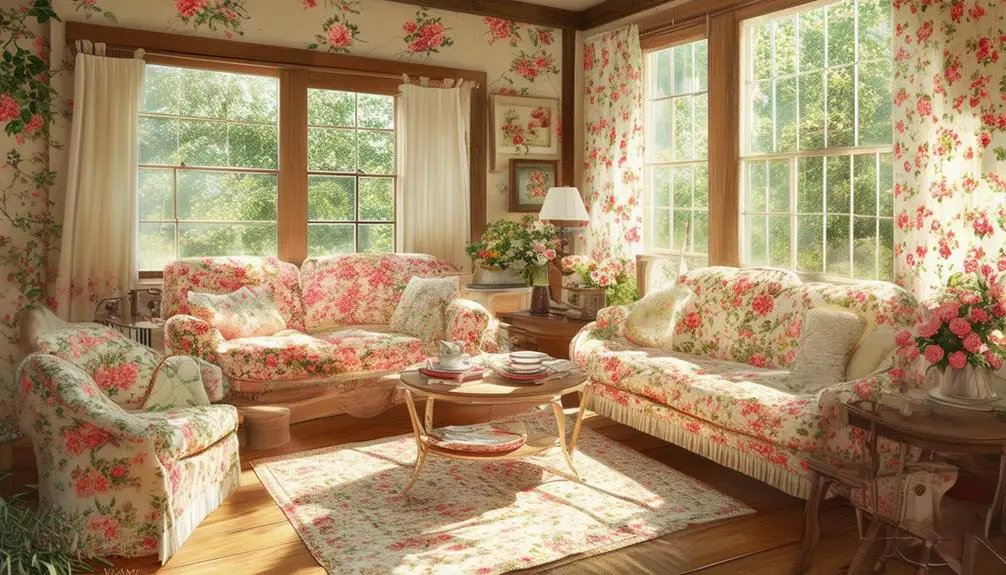You're exploring the history of Laura Ashley, a fashion brand that began in the 1950s with a modest £10 investment in South Wales. The brand quickly gained popularity by offering hand-screen printed fabrics that drew inspiration from vintage styles. By the late 1980s, Laura Ashley had expanded to over 220 stores worldwide, achieving significant revenue and recognition in the fashion industry. However, financial difficulties prompted restructuring and changes in ownership. In recent years, the brand has formed partnerships with contemporary retailers and focused on sustainability, demonstrating its commitment to evolving within a competitive market. As Laura Ashley celebrates its rich legacy, you'll discover fascinating developments that continue to influence its future and presence in the fashion world.
Founding Years and Early Growth
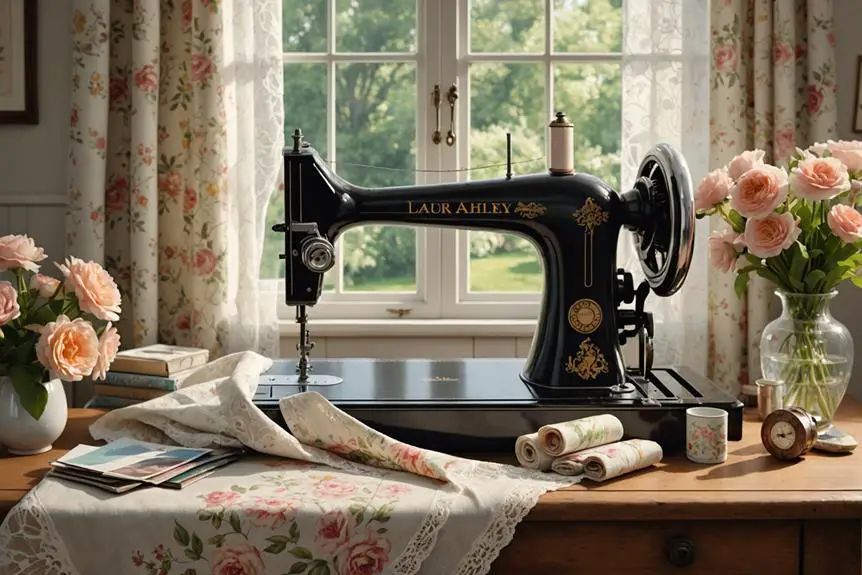
In the early 1950s, Laura Ashley transformed a small investment of £10 into a thriving business that would redefine British design. Starting in Dowlais, South Wales, she began her journey with hand-screen printing fabrics at home, showcasing her artistic flair and entrepreneurial spirit. Inspired by the elegance found in vintage styles, Laura was able to draw parallels to classic fashion movements, much like those seen in brands such as Betty Barclay and their stylish dresses. By 1955, Laura's dedication resulted in impressive early growth, ramping up fabric production to 300 yards daily, a demonstration of her innovative approach and hard work.
The turning point came in 1959 when Laura introduced a gardening apron and smock, which gained significant attention in The London Sunday Times, elevating her brand's recognition. This success laid the foundation for her first shop, which opened in Machynlleth, Wales, in 1961. Living above the store, Laura immersed herself in the business, shaping her vision of home furnishings that embodied the essence of British lifestyle.
Expansion and International Reach
Expanding its horizons in the late 1960s, Laura Ashley quickly shifted from a small Welsh shop to a recognized name in the retail world. The brand opened its first store in London in 1968, marking a pivotal moment in its journey. By 1974, Laura Ashley made its international debut with a store in Paris, enhancing its retail presence in Europe.
Throughout the 1980s, the brand experienced remarkable growth, boasting over 220 stores globally and generating an impressive annual turnover of approximately $130 million by 1985. Its international acclaim peaked when it won the Queen's Award for Export in 1977, a proof of its success in overseas markets.
In the 2000s, Laura Ashley continued its expansion by launching a website in 2000, facilitating online shopping for customers worldwide. Collaborations, like the partnership with Next in 2020, further strengthened its market presence, allowing for a homewares relaunch in 500 stores.
| Year | Milestone | Impact |
|---|---|---|
| 1968 | First store opens in London | Marks shift to retail presence |
| 1974 | First international store in Paris | Expands European reach |
| 2000 | Website launch | Enhances global accessibility |
Challenges and Strategic Changes
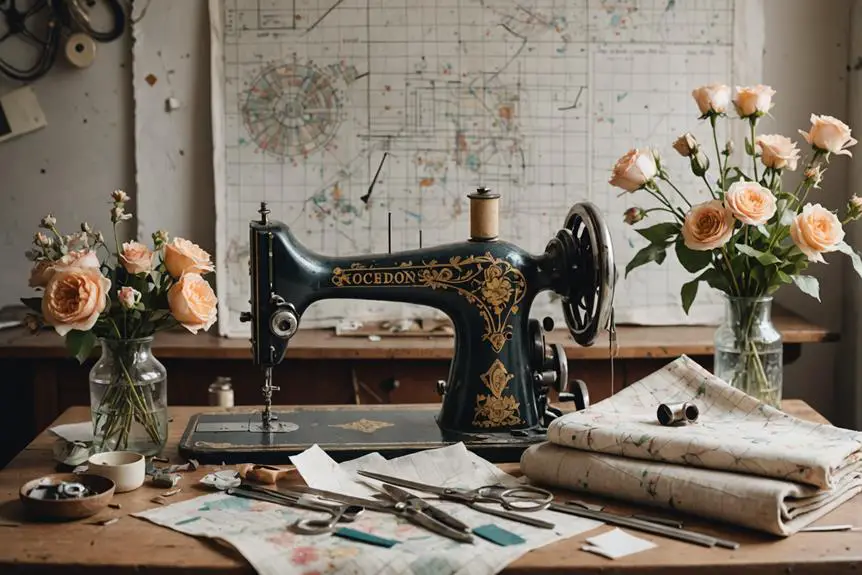
Laura Ashley's journey through the retail landscape has been marked by significant challenges that necessitated strategic changes to regain its footing. In 1991, financial losses forced the company to appoint a new CEO to restore profitability, leading to restructuring efforts in 1992 that initially proved successful. However, the sudden departure of the CEO in 1994 due to strategic disagreements created instability once again.
By 1998, ongoing financial difficulties culminated in Laura Ashley's acquisition by MUI Asia Limited, which aimed to stabilize the brand amid persistent challenges. Despite these efforts, the company faced operational issues from 2009 to 2012, including price discrepancies and negative customer feedback, which further eroded its market presence.
The situation worsened during the pandemic, as Laura Ashley was placed into administration in March 2020 due to pandemic-related challenges. This critical juncture led to its acquisition by Gordon Brothers in April of the same year, marking another pivotal moment in the brand's tumultuous history. Each strategic change reflects a response to these challenges, demonstrating the complex nature of sustaining a retail legacy like Laura Ashley in a rapidly evolving market.
Revival and Brand Collaborations
Following its acquisition by Gordon Brothers in April 2020, Laura Ashley initiated a revitalization journey that embraced both its heritage and contemporary market trends. The brand's revival strategy focused on strategic collaborations, helping reintroduce its designs to a new audience.
One notable success was the partnership with Urban Outfitters in 2019, which merged vintage aesthetics with modern flair, enchanting Gen Z. The collaboration not only revived interest but also set the stage for future endeavors.
In October 2020, Laura Ashley signed a deal with Next, launching homewares in 500 stores and marking a significant retail comeback. Spring 2021 brought an exciting collaboration with designer Batsheva, resulting in a fresh fashion line inspired by the brand's rich legacy.
The year 2023 celebrated Laura Ashley's 70th anniversary, highlighting its commitment to heritage and innovation through a special edition collection derived from its extensive archive.
| Collaboration | Year | Focus Area |
|---|---|---|
| Urban Outfitters | 2019 | Vintage & Modern |
| Next | 2020 | Homewares |
| Batsheva | 2021 | Fashion Line |
| 70th Anniversary | 2023 | Special Edition |
Product Range and Design Philosophy
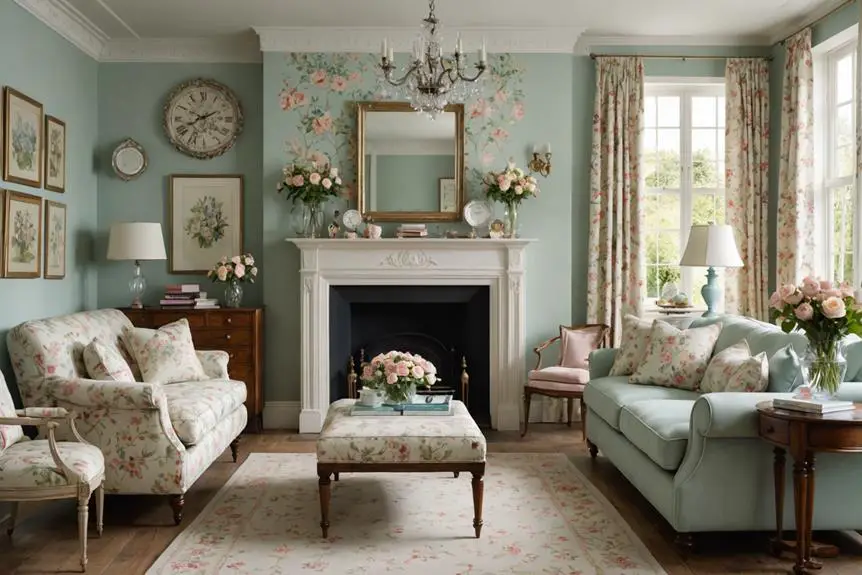
At the heart of Laura Ashley's identity lies a rich product range that seamlessly marries timeless design with modern sensibilities. You'll find a enchanting collection of fabrics, wallpapers, and home furnishings, all adorned with floral patterns and vintage-inspired designs that echo traditional British aesthetics. This emphasis on quality craftsmanship guarantees that each piece is not only beautiful but built to last.
Laura Ashley's design philosophy is deeply rooted in nature-inspired motifs and soft color palettes, creating a romantic atmosphere that transforms any space into a serene retreat. Regularly introduced seasonal collections keep the offerings fresh and relevant, blending classic styles with contemporary trends, allowing you to curate a home that reflects your evolving taste.
Moreover, the brand is committed to sustainable practices, utilizing natural materials like cotton and linen. This conscious approach enhances the appeal of Laura Ashley's products while promoting environmental responsibility. Collaborations with various designers have led to exclusive product lines, expanding the brand's reach into lifestyle products beyond textiles and home decor. Ultimately, Laura Ashley invites you to embrace a harmonious blend of elegance and sustainability in your living spaces.
Market Position and Legacy
The legacy of Laura Ashley is firmly established within the domains of British design, where its floral patterns and vintage aesthetics have become emblematic of a specific lifestyle. By the mid-1980s, with over 220 stores worldwide and an impressive annual turnover of US$130 million, Laura Ashley maintained a robust market position. The brand effectively targeted middle to upper-middle-class consumers, establishing itself as a cultural icon in home decor.
The company's shift from fashion to home decor in the 1970s marked a pivotal moment, with the launch of its first Home catalog in 1981 influencing interior design trends. This change not only showcased Laura Ashley's commitment to craftsmanship but also solidified its brand identity within a global lifestyle context. When Laura Ashley Holdings plc went public shortly after her death in 1985, the 34 times oversubscription reflected substantial market interest and a lasting legacy.
Despite facing financial challenges in later decades, the brand's distinct floral patterns and vintage designs have allowed it to remain relevant. Laura Ashley's enduring influence on home furnishings and commitment to quality continue to resonate, ensuring that its legacy will persist in the hearts of consumers and designers alike.
Recent Developments and Future Directions
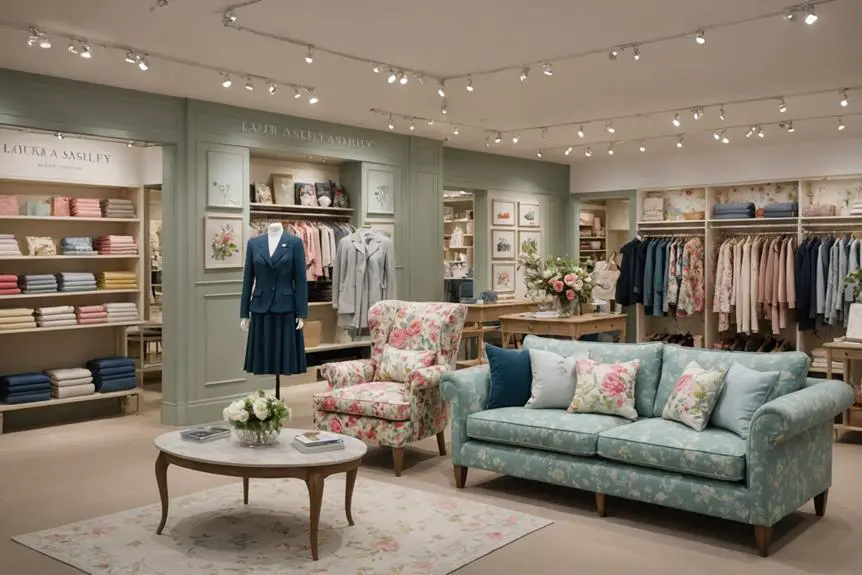
Laura Ashley's storied legacy continues to evolve as it embraces modern trends and consumer preferences. In 2023, the brand celebrated its 70th anniversary by launching a special edition collection derived from its extensive archive, a nod to its rich brand heritage. Recent developments reveal a strong commitment to innovation, particularly in expanding product lines to include eco-friendly options that resonate with today's environmentally conscious consumers.
As Laura Ashley looks towards future directions, it aims to enhance the online shopping experience through advanced technology, making it more user-friendly and engaging. To increase its global market reach, the brand is forging strategic partnerships, including collaborations with contemporary designers like Batsheva and retailers like Next. These partnerships are designed to refresh offerings and attract younger demographics, a vital move in today's competitive landscape.
Innovative marketing strategies are also at the forefront, targeting modern consumers while honoring the brand's legacy. In addition, plans to establish a heritage hub in Powys emphasize a commitment to preserving the essence of Laura Ashley while exploring new markets and opportunities, ensuring the brand remains relevant and vibrant for years to come.
Frequently Asked Questions
What Are Some Interesting Facts About Laura Ashley?
You might find it interesting that Laura Ashley started with just a £10 investment, gained fame through a gardening apron, and influenced the 'shabby chic' style, leaving a lasting impact on fashion and home decor.
What Happened After Laura Ashley's Death?
After Laura Ashley's death, the company experienced rapid growth and public interest but later faced challenges like over-expansion and financial struggles, which prompted restructuring, store closures, and a shift in brand direction through collaborations.
How Did Laura Ashley Become Famous?
Laura Ashley became famous through her unique floral textiles and feminine designs, resonating with consumers. Her innovative marketing strategies and partnerships helped establish a strong brand identity, leading to widespread recognition and enduring popularity.
What Has Happened to Laura Ashley?
Laura Ashley faced financial struggles, leading to administration in 2020. Acquired by Gordon Brothers, it's since revived its brand through strategic partnerships and licensing, aiming to attract younger customers while celebrating its heritage.
